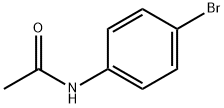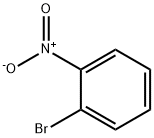Aniline Hydrobromide
Synonym(s):Aniline hydrobromide;Anilinium bromide;Benzenamine hydrobromide;Benzenaminium bromide;Greatcell Solar
- CAS NO.:542-11-0
- Empirical Formula: C6H8BrN
- Molecular Weight: 174.04
- MDL number: MFCD00035465
- EINECS: 208-801-9
- SAFETY DATA SHEET (SDS)
- Update Date: 2024-12-18 14:08:52

What is Aniline Hydrobromide?
The Uses of Aniline Hydrobromide
Organohalide based perovskites have emerged as an important class of material for solar cell applications. Our perovskites precursors are useful for synthesizing mixed cation or anion perovskites needed for the optimization of the band gap, carrier diffusion length and power conversion efficiency of perovskites based solar cells.
Purification Methods
Crystallise the hydrobromide from water or EtOH and dry it at 5mm over P2O5. Also recrystallise it four times from MeOH containing a few drops of conc HBr by addition of pet ether (b 60-70o), then dry it to constant weight over paraffin chips in vacuo [Gutbezahl & Grunwald J Am Chem Soc 75 559 1953]. It precipitates from EtOH solution on addition of Et2O, and the filtered solid is recrystallised from EtOH and dried in vacuo. [Buchanan et al. J Am Chem Soc 108 1537 1986, Beilstein 12 III 232.]
Properties of Aniline Hydrobromide
| Melting point: | 285°C(dec.)(lit.) |
| Water Solubility | Soluble in water |
| form | powder to crystal |
| color | White to Light yellow to Dark green |
| EPA Substance Registry System | Aniline hydrobromide (542-11-0) |
Safety information for Aniline Hydrobromide
| Signal word | Danger |
| Pictogram(s) |
 Corrosion Corrosives GHS05  Skull and Crossbones Acute Toxicity GHS06  Health Hazard GHS08  Environment GHS09 |
| GHS Hazard Statements |
H317:Sensitisation, Skin H318:Serious eye damage/eye irritation H341:Germ cell mutagenicity H351:Carcinogenicity H372:Specific target organ toxicity, repeated exposure H400:Hazardous to the aquatic environment, acute hazard |
| Precautionary Statement Codes |
P273:Avoid release to the environment. P280:Wear protective gloves/protective clothing/eye protection/face protection. P301+P310:IF SWALLOWED: Immediately call a POISON CENTER or doctor/physician. P305+P351+P338:IF IN EYES: Rinse cautiously with water for several minutes. Remove contact lenses, if present and easy to do. Continuerinsing. |
Computed Descriptors for Aniline Hydrobromide
New Products
(S)-3-Aminobutanenitrile hydrochloride 4-Methylphenylacetic acid N-Boc-D-alaninol N-BOC-D/L-ALANINOL Tert-butyl bis(2-chloroethyl)carbamate 3-Morpholino-1-(4-nitrophenyl)-5,6-dihydropyridin- 2(1H)-one Furan-2,5-Dicarboxylic Acid Tropic acid 1-Bromo-3,5-Di-Tert-Butylbenzene S-2-CHLORO PROPIONIC ACID ETHYL ISOCYANOACETATE 2-Bromo-1,3-Bis(Dimethylamino)Trimethinium Hexafluorophosphate 4-IODO BENZOIC ACID 3-NITRO-2-METHYL ANILINE 1-(2,4-DICHLOROPHENYL) ETHANAMINE (2-Hydroxyphenyl)acetonitrile 4-Bromopyrazole 2-(Cyanocyclohexyl)acetic acid 4-methoxy-3,5-dinitropyridine 1-(4-(aminomethyl)benzyl)urea hydrochloride 2-aminopropyl benzoate hydrochloride diethyl 2-(2-((tertbutoxycarbonyl)amino) ethyl)malonate tert-butyl 4- (ureidomethyl)benzylcarbamate Ethyl-2-chloro((4-methoxyphenyl)hydrazono)acetateRelated products of tetrahydrofuran








You may like
-
 Aniline Hydrobromide CAS 542-11-0View Details
Aniline Hydrobromide CAS 542-11-0View Details
542-11-0 -
 ANILINE HYDROBROMIDE CAS 542-11-0View Details
ANILINE HYDROBROMIDE CAS 542-11-0View Details
542-11-0 -
 1975-50-4 98%View Details
1975-50-4 98%View Details
1975-50-4 -
 2-HYDROXY BENZYL ALCOHOL 98%View Details
2-HYDROXY BENZYL ALCOHOL 98%View Details
90-01-7 -
 2-Chloro-1,3-Bis(Dimethylamino)Trimethinium Hexafluorophosphate 221615-75-4 98%View Details
2-Chloro-1,3-Bis(Dimethylamino)Trimethinium Hexafluorophosphate 221615-75-4 98%View Details
221615-75-4 -
 61397-56-6 CIS BROMO BENZOATE 98%View Details
61397-56-6 CIS BROMO BENZOATE 98%View Details
61397-56-6 -
 14714-50-2 (2-Hydroxyphenyl)acetonitrile 98+View Details
14714-50-2 (2-Hydroxyphenyl)acetonitrile 98+View Details
14714-50-2 -
 118753-70-1 98+View Details
118753-70-1 98+View Details
118753-70-1